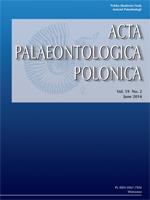Brain endocasts are rare in the fossil record because they are only preserved under exceptional conditions. An equid brain endocast from the early Pleistocene of Wanrong County, Shanxi Province, China, is reported in this paper. Measuring approximately 140 × 95.2 × 83 mm, the new specimen represents a relatively advanced adult horse brain. Comparisons indicate that it is more derived than those of Hyracotherium and Mesohippus in having an expanded neocortex, and more than those of Pliohippus and Hipparion in having an enlarged network of branching sulci; in most characters involving these sulci, the Shanxi brain conforms to the extant species Equus caballus. The sulcus diagonalis of the Equus brain appears to have evolved conservatively during the early Pleistocene, whereas the sulcus suprasylvius seems to have evolved rapidly. The specimen demonstrates that the development of a high degree of complexity predates the enlargement of the brain in the horse, which increased in length, breadth, and especially height during the late Cenozoic.
How to translate text using browser tools
1 June 2014
Pleistocene Equid Brain Endocast from Shanxi Province, China
Ying Hu,
Yaoxing Chen,
Shuo Wang,
Qingmin Sun

Acta Palaeontologica Polonica
Vol. 59 • No. 2
June 2014
Vol. 59 • No. 2
June 2014
China
equid brain
Equus
Mammalia
Pleistocene
Shanxi Province




